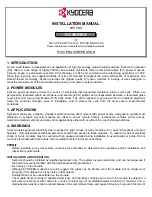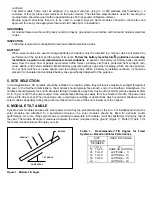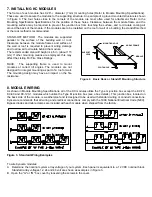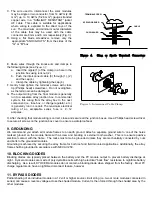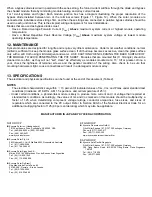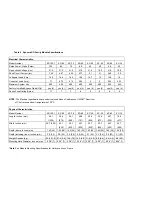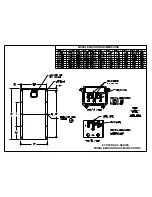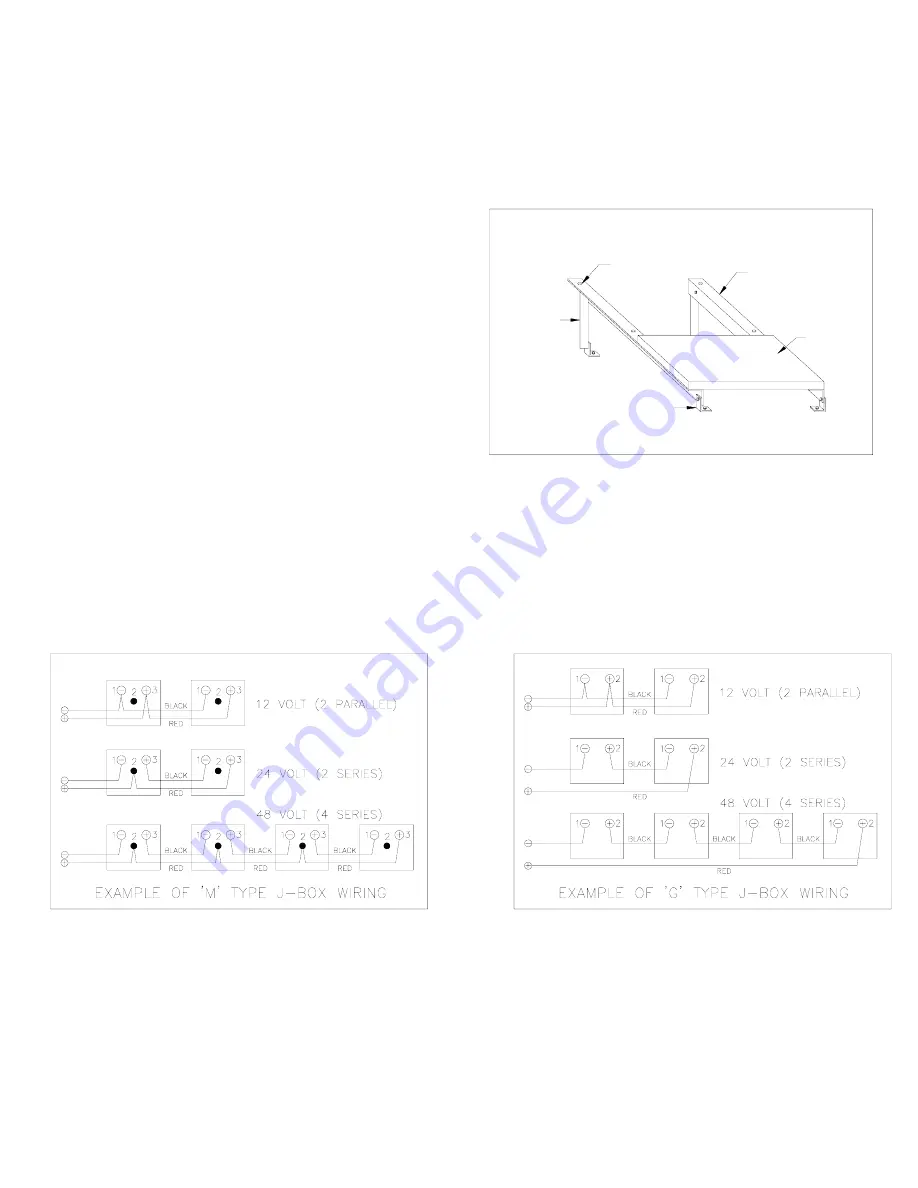
7. INSTALLING KC MODULES
The frame of each module has 0.28
”
φ
diameter (7 mm) mounting holes (Refer to Module Mounting Specifications).
These are used to secure the modules to the supporting structure. An example of a ground mounted structure is shown
in Figure 3. The four holes close to the corners of the module are most often used for attachment. Refer to the
Mounting Specification Specifications for the position of these holes. Clearance between the module frame and the
mounting surface may be required to prevent the junction box from touching the surface, and to circulate cooling air
around the back of the module. If the modules are to be installed on the roof or wall of a building, the standoff method
or the rack method is recommended.
STAND-OFF METHOD: The modules are supported
parallel to the surface of the building wall or roof.
Clearance between the module frames and surface of
the wall or roof is required to prevent wiring damage
and to allow air to circulate behind the module.
The recommended stand-off height is 4.5 in. (about 115
mm) If other mounting means are employed, this may
affect the Listing For Fire Class Ratings.
RACK: The supporting frame is used to mount
modules at correct tilt angles. The modules are not
designed for integral mounting as part of a roof or wall.
The mounting design may have an impact on the fire
resistance.
FOOT ANGLE
SUPPORT
LEGS
MOUNTING HOLE
ARRAY FRAME
MODULE
Figure 2. Basic Rack or Standoff Mounting Structure
8. MODULE WIRING
As shown in Module Mounting Specifications, all of the KC modules utilize the Type G junction box except the KC-70,
KC-80 and KC-120-1 modules which utilize the Type M junction box (see J-box details). This junction box, located on
the back side of the module, is weatherproof and is designed to be used with standard wiring or conduit connections.
Kyocera recommends that all wiring and electrical connections comply with the 1999 National Electrical Code (NEC).
Bypass diodes and cable clamps are included with each module when shipped from the factory.
Figure 3. Standard Wiring Examples
To wire Kyocera modules:
A
Determine the nominal system array voltage of your system. Each panel is equivalent to a 12 VDC nominal block.
Standard array voltages 12, 24 and 48 volt are shown as examples in Figure 3.
B. Open the "G" or "M" box cover by loosening the screws in the cover.

